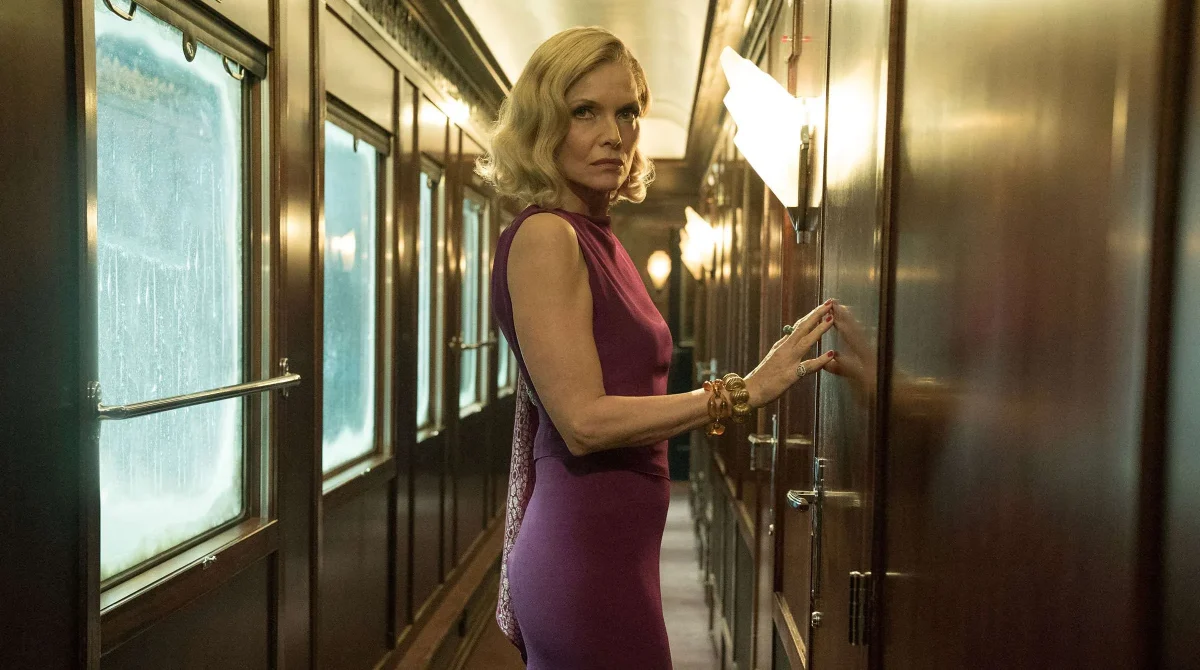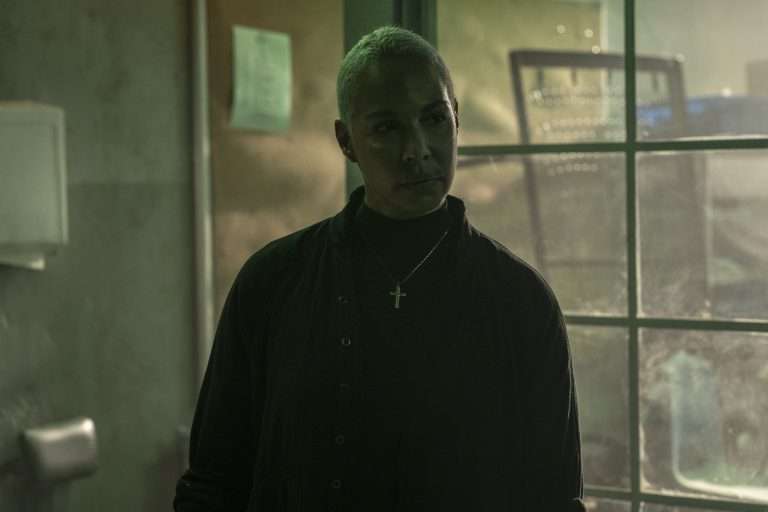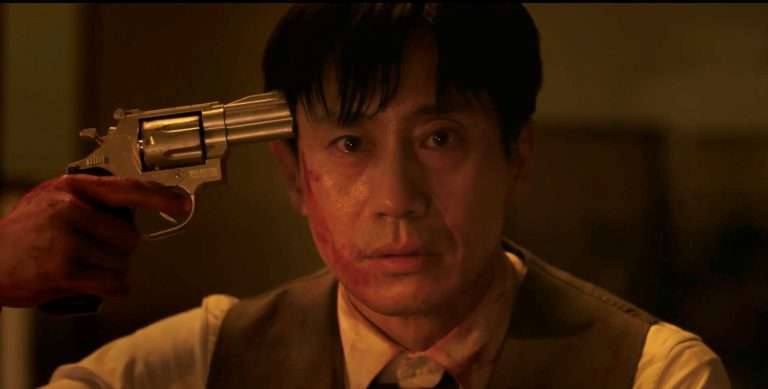In Murder on the Orient Express (2017), detective Hercule Poirot unravels a dense tapestry of lies, grief, and collective retribution following the brutal murder of Edward Ratchett. As the layers peel back, Poirot reveals that Ratchett is, in fact, John Cassetti—a man far more monstrous than he first appears, the architect of a past crime too heinous to forgive. But is that the whole story? Is justice truly served, or merely repackaged? Beneath the surface lies a deeper web of moral ambiguity, shared trauma, and the question of whether vengeance can ever be just. What truths still lie buried in the snowbound silence of that train? Let’s take a closer look.
Spoilers Ahead
Murder on Orient Express (2017) Plot Summary and Movie Synopsis:
What Happens to Edward Ratchett?
Edward Ratchett boards the Orient Express, acting as a wealthy American businessman with no issues. But upon getting on the train, Ratchett starts acting a little seedy, and in fact, he seems unsettled, as if he is experiencing anxiety. What promotes this predilection? Hey, it is not as if a bag of anonymous documents provides written death threats. These layers suggest Ratchett’s past has resurfaced. Ratchett panics and calls world-renowned detective Hercule Poirot for protection because he claims to be threatened and fears for his life. Poirot gets the instinctive sense that Ratchett is icky and morally reprehensible, so he does not accommodate his request.
Later that evening, due to an avalanche blocking the tracks, the train comes to a stop and welcomes its guests to a terrible stranded night. The passengers stay in their cabins, but in an unfortunate turn of events, that leads to his demise, Ratchett summons Poirot. But on the 12th stab wound with varied narrow angles and 6 variations in pressure, Ratchett is dead.
Poirot hears odd noises and sees a mysterious figure in a red kimono rushing down the hallway, indicating suspicious activity around the time of the murder. Through Poirot’s inquiry, it is revealed that Ratchett is not who he says he is. He is John Cassetti, an infamous gangster known for the kidnapping and murder of young Daisy Armstrong, the daughter of a wealthy American family. The crime shocked the public, and while Cassetti found ways to escape justice, he left emotional scars with those connected to the Armstrong family.
As Poirot continues his detailed interrogations, he begins to discover strange links among the passengers. Many of them are linked directly or indirectly to the Armstrong family: family members, employees, friends, and even lovers. Poirot infers that they were all complicit in the murder of Ratchett, as a group of vengeful people. Each participant gave Ratchett at least one stab wound, representing collective justice for the death of their beloved Daisy.
The different severity of the stab wounds represents their different states of emotional duress. Edward Ratchett was murdered not for passions of crime or greed; instead, his murder was a calculated revenge. The murder transcends vengeance; it is a shared decision made by people the justice system failed to protect.
What Truth Does Poirot Find Out While Investigating the Crime?

Poirot begins his investigation by examining the burnt remnants of a note found in Ratchett’s compartment. While this note is mostly burnt beyond any semblance of legibility, it is, even in its soaked and burnt state, sufficient to expose that most important piece of information, Ratchett’s real name, that is, John Cassetti. Cassetti was behind the kidnapping and murder of Daisy Armstrong, a wealthy child heiress.
Once Poirot realizes who Ratchett is, he can place the facts of the case in an entirely different context. He can frame the threatening letters that Ratchett received, and why someone aboard the train might have had a motive to kill him. Poirot understands that the motive was not about what happened yesterday or about money, but about a tragedy that resulted in the destruction of a family and the death of a child, Daisy.
Poirot looks back on the tragic happenings that started because of Daisy’s murder. Sonia Armstrong, Daisy’s mother, goes into premature labor and dies with her unborn child. Colonel Armstrong, Daisy’s father, in great despair, kills himself. Their maid, Susanne, who just happened to be working for the family, provided the kidnapping party with carriages for their escape, was accused, and subsequently took her own life.
The babysitter had lost all of her family. From this tragic sequence of events, Poirot begins to suspect that they had a great deal of emotion, pain, and injustice left amid all of the human carnage caused by Cassetti’s crime against Daisy and the Armstrongs. The baby’s death was a trigger, and it didn’t just stop with Daisy; it affected everyone linked to her.
Poirot finds further clues: a conductor’s uniform button and a bloodstained handkerchief with the initial ‘H’ in Mrs. Hubbard’s cabin. These items seem deliberately placed, meant to confuse the investigation. Later, the same uniform and a red kimono, worn by a mysterious figure Poirot saw the night of the murder, appear in Poirot’s suitcase. Poirot realizes the killer is not acting alone and that someone is trying to mislead him. As Poirot interviews each passenger, subtle details emerge that link them all to the Armstrong family. Some were directly part of the household; others were emotionally connected. Poirot begins to see that this is not a random gathering of strangers but a carefully planned reunion of people bound by a shared tragedy.
Also Read: 10 Films To Watch If You Liked Knives Out (2019)
During an intense moment, Dr. Arbuthnot shoots Poirot, but only in the shoulder. Poirot, noting Arbuthnot’s history as a marksman, immediately recognizes that the shot was never meant to kill. Arbuthnot’s actions are a diversion, a way to protect the others. This failed murder attempt confirms Poirot’s suspicion: all the passengers conspired together. The truth Poirot ultimately discovers is not about a single killer but about collective justice. Each passenger delivers one stab wound. Together, they act as jury, judge, and executioner, righting a wrong the law could not.
What Truth Does Poirot Find Out About the Passengers?
While investigating the murder of Edward Ratchett, Poirot gradually uncovers that the passengers on the Orient Express are not strangers brought together by chance. In fact, they are deeply connected through a singular tragedy, the Armstrong case. Each one conceals a false identity, united by a desire for justice denied by the legal system. Countess Andrenyi is revealed to be Helena, the sister of Sonia Armstrong and Daisy’s aunt. Debenham served as governess to Daisy and Helena, placing her close to the heart of the tragedy. Princess Dragomiroff, traveling with her maid, turns out to be Daisy’s godmother.
Three of the passengers: Marquez, Schmidt, and Pilar Estravados, once worked directly in the Armstrong household as chauffeur, cook, and nursemaid. Their presence suggests loyalty and shared grief. Masterman, Ratchett’s valet, is in fact a former comrade of Colonel Armstrong. Though terminally ill, he participates in the murder out of love for his friend. Dr. Arbuthnot, another military associate of Armstrong, joins the conspiracy not just out of duty, but out of affection for Debenham.
Poirot also learns that Pierre Michel, the train conductor, is Susanne’s brother. Susanne was the Armstrong family’s maid who was wrongly accused of helping Cassetti and later died by suicide. MacQueen’s father, a district attorney, had been manipulated into prosecuting Susanne, and the guilt ruined his life. MacQueen now seeks justice for that failure. Meanwhile, Hardman, posing as an Austrian professor, is actually a former New York policeman who loved Susanne and still mourns her death.

Perhaps the most surprising revelation is that Mrs. Hubbard is actually Linda Arden, a retired stage actress and Sonia Armstrong’s mother. She is Daisy’s grandmother and the emotional architect of the murder plot. Her grief and acting skills allow her to manipulate appearances and organize the elaborate plan of collective revenge. Poirot concludes that these passengers, bound by love, grief, and injustice, are not murderers in the usual sense. Each plays a role in restoring moral balance. Their true identities expose a network of wounded souls seeking to heal a wound the law refused to acknowledge.
Murder on the Orient Express (2017) Movie Ending Explained:
What Inspires the Killing of Ratchett in Orient Express?
Poirot’s investigation leads to a shocking truth: Ratchett, whose real identity is the infamous child murderer John Cassetti, is not killed by one person, but by all the passengers acting together. Each of them stabs him once, contributing equally to the crime. This shared act is both symbolic and deliberate. By sharing the guilt, they ensure that no single person can be blamed, and no one bears the full weight of the murder alone.
Mrs. Hubbard, revealed to be Linda Arden, Sonia Armstrong’s mother and Daisy’s grandmother, confesses to orchestrating the murder. Her background as a stage actress allows her to craft the deception. She uses her grief and charisma to recruit others equally affected by Cassetti’s crime. Each person on the train has lost someone, had their lives shattered, or bears the emotional scars of the Armstrong tragedy. They come together not out of hatred, but out of love and the desire for justice.
Several passengers take part in misdirecting Poirot. Debenham wears the red kimono seen by Poirot in the hallway, creating confusion about the suspect’s identity. Arbuthnot, a military marksman and former comrade of Colonel Armstrong, superficially stabs Hubbard to stage an external attack, making it seem like the killer is still on the loose. These distractions are carefully planned, but Poirot sees through them with his trademark logic.
In the end, Poirot understands their motive: they believe legal justice failed when Cassetti escaped punishment for Daisy’s murder. Their actions, though unlawful, are driven by a need to restore emotional and moral balance. Poirot, a man of strict order and truth, is shaken. He tests their characters by offering them a gun and daring them to silence him. When Hubbard attempts suicide with the unloaded gun, Poirot sees their remorse and shared suffering.
For the first time, Poirot chooses to lie. He presents the Yugoslavian police with an alternate version of the story, a lone killer who escaped. He knows that Ratchett’s death is not just a murder, but a collective cry for justice from people broken by tragedy. In this moment, Poirot protects not just the passengers, but the fragile idea of human justice.






![Against the Ice [2022] Netflix Review: A Flat Survivor Thriller that Never Quite Catches the Adventure Sprit](https://79468c92.delivery.rocketcdn.me/wp-content/uploads/2022/03/Against_the_Ice_20201024_Unit_02235_R-768x512.jpg)